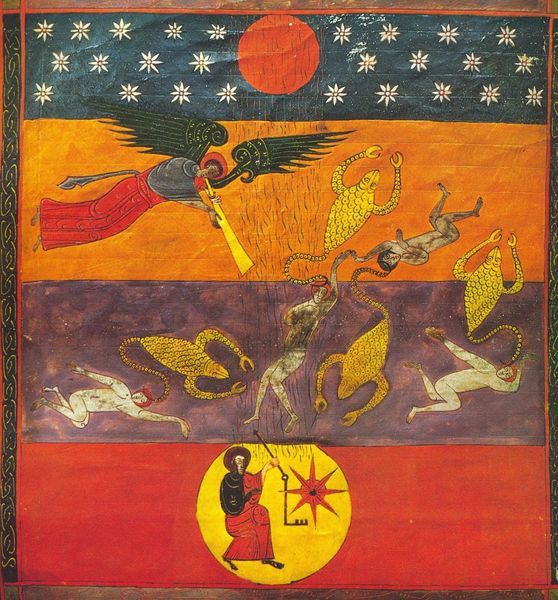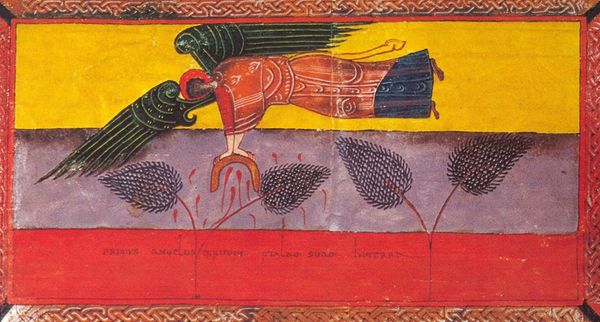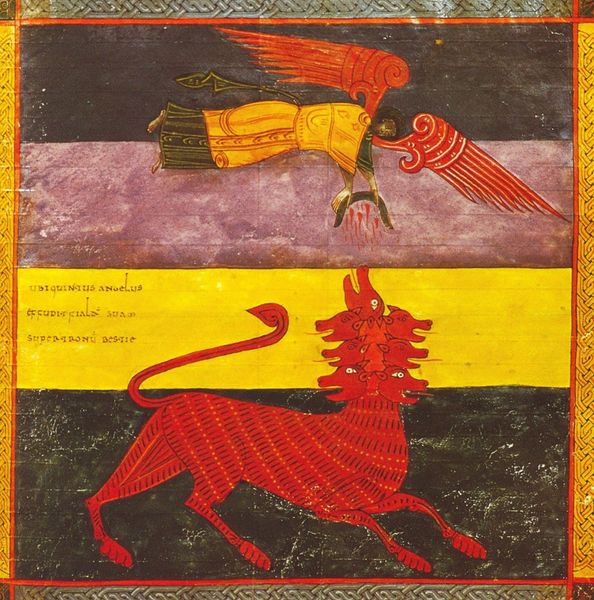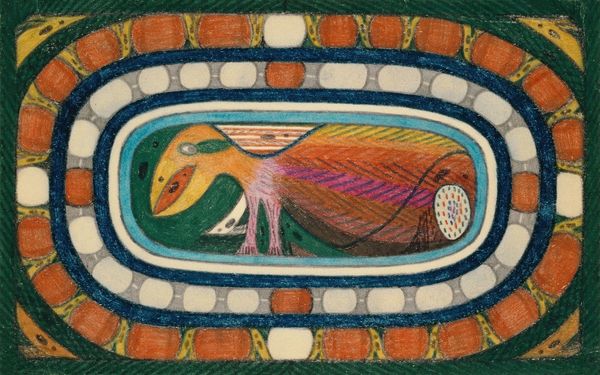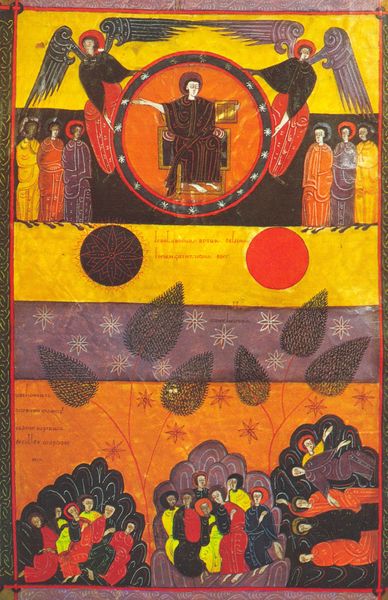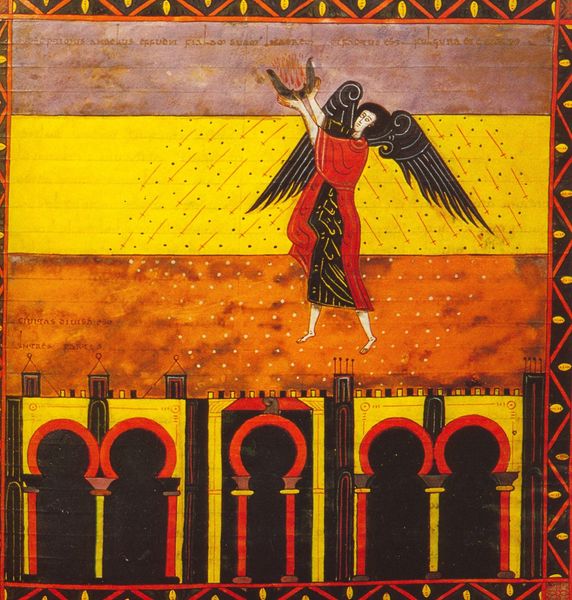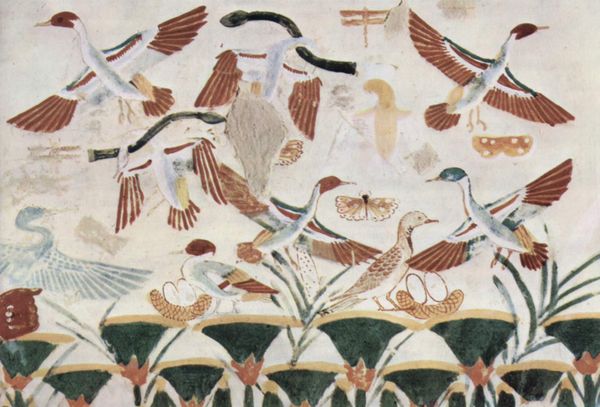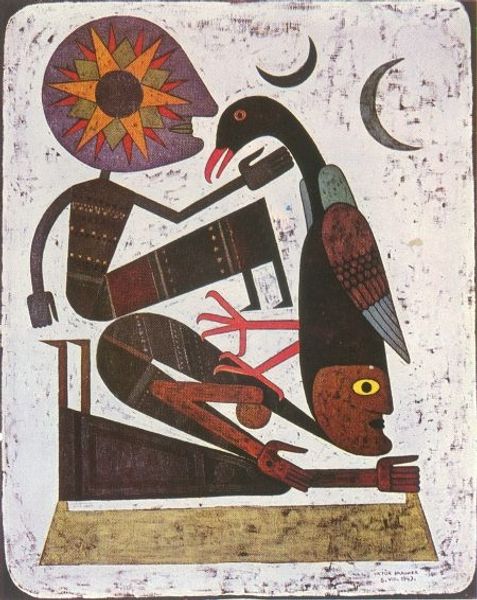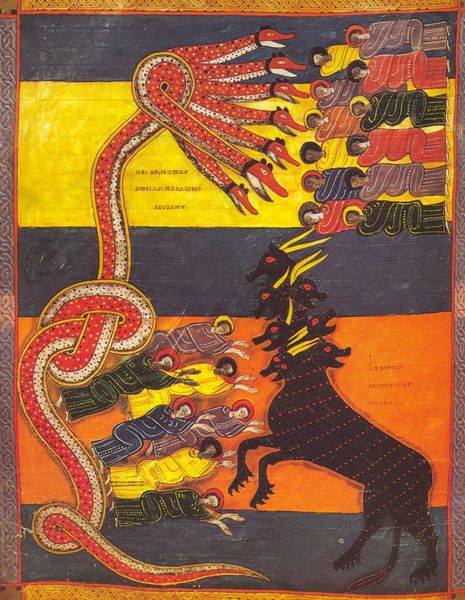
tempera, painting, mural
#
byzantine-art
#
allegory
#
tempera
#
painting
#
figuration
#
naive art
#
history-painting
#
mural
Copyright: Public domain
Curator: Here we see a painting titled "La troisi\u00e8me Trompette. L'Etoile Absinthe tombe dans les eaux.. Apoc. VIII," a tempera and mural work signed Facundus. Editor: My immediate impression is one of stark division, and almost theatrical chaos. A flat yellow plane dominating the top, starkly contrasted against the tumbling forms below. Curator: Yes, it visualizes a very specific biblical passage: the third trumpet judgment from the Book of Revelation, where a great star, called Wormwood, falls upon the earth, poisoning the waters. Editor: Wormwood... absinthe. That certainly amplifies the imagery. I'm struck by the linearity—those thick, almost serpentine lines crisscrossing the central register. It's as though we’re seeing conduits of corruption rather than a free-flowing liquid. Curator: The figures too seem suspended, not quite drowning, more like floating through a poisonous atmosphere, marked for destruction. It reminds me of traditional Byzantine depictions of hell, with rigid formality. Editor: Yet there's a naive quality, almost a folk-art sensibility, that tempers the horror. Note the star itself: a symmetrical, rather beautiful geometric form despite its destructive agency. Even the angel holds what I assume is the vessel of absinthe, a precise, almost clinical delivery method. Curator: Perhaps, Facundus uses the naivete as a lens. He isn't just representing disaster. He critiques how humanity responds, willingly, unknowingly to its arrival. Note the color choices. Editor: The red garments and wings of the angel contrasting against that pale yellow field. It's an uncanny pairing. And the figures’ stark pallor exacerbates the emotional feel of distress. Curator: And beyond the chaos is something profound. Here we are shown an unfolding vision rooted in cultural memory, presented to make us rethink established doctrines, the role of evil and potentiality to overcome catastrophe. Editor: Indeed. In considering the arrangement and that division between color and form, chaos and composition, there is also, perhaps a warning—that ruin also possesses a certain distorted beauty, drawing our gaze, ensnaring our attention even as it consumes.
Comments
No comments
Be the first to comment and join the conversation on the ultimate creative platform.
